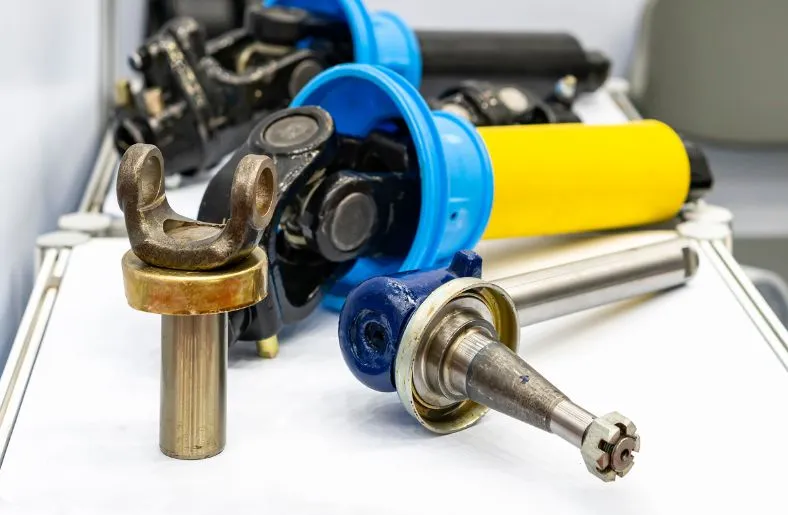Tie rod ends are critical components of your vehicle’s steering system, connecting the steering rack to the steering knuckle. Properly lubricating tie rod ends is essential to ensure smooth and responsive steering, extend their lifespan, and prevent premature wear and tear.
In this guide, we’ll walk you through the steps of how to grease tie rod ends effectively.
Table of Contents
How to Grease Tie Rod Ends
Why Greasing Tie Rod Ends Is Important
Before we dive into the process of how to grease tie rod ends, let’s understand why greasing tie rod ends is crucial for your vehicle’s performance and safety.
- Enhanced Steering Control: Well-greased tie rod ends allow for precise and responsive steering, giving you better control over your vehicle, especially during tight turns or sudden maneuvers.
- Preventing Premature Wear: Without proper lubrication, tie rod ends can wear out quickly, leading to costly replacements and potential safety hazards.
- Reducing Steering Play: Regular greasing helps reduce steering play, ensuring that your vehicle responds immediately to your steering inputs.
Shop my favourite items below:
- Schaeffer Manufacturing Co. 02382-029S Ultra Supreme Grease, NLGI #2: https://amzn.to/42xpfPB
- Red Line 80402 High Performance CV-2 Synthetic Grease Cartridge with Red Moly: https://amzn.to/3RKhwZm
- Elba Multi-Red Grease is NLGI #2: https://amzn.to/4jNB2Ar
How to Grease Tie Rod Ends: A Step-by-Step Guide
Now, let’s get into the step-by-step process of how to grease tie rod ends.
Step 1: Gather Your Tools
To get started, you’ll need a few basic tools and materials:
- Grease gun: Make sure it’s filled with the appropriate grease for your vehicle.
- Jack and jack stands: These are essential for safely raising and securing your vehicle.
- Lug wrench: You may need to remove the wheels for easier access.
- Safety gear: Wear gloves and safety glasses to protect yourself from grease and debris.
Step 2: Lift the Vehicle
Using the jack and jack stands, carefully lift the front of your vehicle and secure it on the stands. Ensure that it’s stable and won’t move while you work underneath.
Step 3: Locate the Tie Rod Ends
Identify the tie rod ends on your vehicle. You’ll find them near the wheels, connected to the steering knuckle. There will be an outer tie rod end and an inner tie rod end.
Step 4: Remove the Dust Boot
The tie rod ends are protected by a dust boot or rubber cover. Gently pry off the dust boot using a flathead screwdriver, being careful not to damage it. This will expose the tie rod end and the grease fitting.
Step 5: Attach the Grease Gun
Attach the nozzle of the grease gun to the grease fitting on the tie rod end. Make sure it’s secure and won’t leak grease during the process.
Step 6: Pump in Grease
Now, slowly pump grease into the tie rod end. Keep an eye on the boot; you’ll notice it starting to expand as you pump in grease. Continue pumping until you see fresh grease oozing out from the joint.
Step 7: Wipe Excess Grease
Use a clean rag to wipe off any excess grease that has come out from the joint. This helps prevent dirt and debris from sticking to the excess grease, which could lead to accelerated wear.
Step 8: Reattach the Dust Boot
Carefully slide the dust boot back over the tie rod end. Ensure it’s properly seated and covers the entire joint. The boot helps protect the tie rod end and grease from contaminants.
Step 9: Repeat for Other Tie Rod Ends
If your vehicle has multiple tie rod ends (usually one on each front wheel), repeat the greasing process for each of them.
Step 10: Lower the Vehicle
Once you’ve greased all the tie rod ends and ensured the dust boots are securely in place, carefully lower your vehicle back to the ground using the jack.
Related Guide: How to Load a Grease Gun Without a Cartridge: A Step-by-Step Guide (2023-2024)
FAQs
1. What grease is used on tie rod ends?
Type LB is an industry standard for chassis grease used on tie-rod ends, ball joints, u-joints, and control-arm shafts. This type of grease is not recommended for wheel bearings; acceptable greases for axle and wheel bearings carry a type GC designation.
2. How often do you grease tie rod ends?
After installation, MOOG recommends greasing these parts at each oil change for heavy-duty vehicles and at every tire rotation (i.e., annually) for standard-duty vehicles.
3. Why do tie rod ends fail?
Normal wear and tear can cause a tie rod to fail; driving hazards like potholes and accidents can also cause damage to a tie rod. If a tie rod becomes damaged and fails, the effects can range from mild (premature tire wear) to extreme (loss of vehicle control).
4. Can tie rods leak grease?
The boots leak because the grease gets hot, thins out, and the boot is sometimes squeezed as it’s worked. Some also appear to leak, but it’s the relief port on the joint. Some folks cycle out old grease occasionally, which is not a bad idea.
5. Do tie rod ends need to be greased?
The consensus is to grease these parts when its time for your oil change, but garages do not always do this. Also if a lot of water and grime are thrown around under your car you might want to lubricate your tie rod ends more often.
Conclusion
Properly greasing tie rod ends is a simple yet essential maintenance task that can significantly impact your vehicle’s steering performance and longevity. Regularly inspecting and greasing tie rod ends can save you money on repairs and ensure your vehicle’s safety on the road.
By following the above guide on how to grease tie rod ends and incorporating tie rod end maintenance into your vehicle care routine, you can enjoy smoother steering, reduced wear and tear, and a safer driving experience.
Remember, a well-maintained vehicle is not only more enjoyable to drive but also safer for you and everyone on the road. So, take the time to grease your tie rod ends and keep your vehicle running smoothly for years to come.

